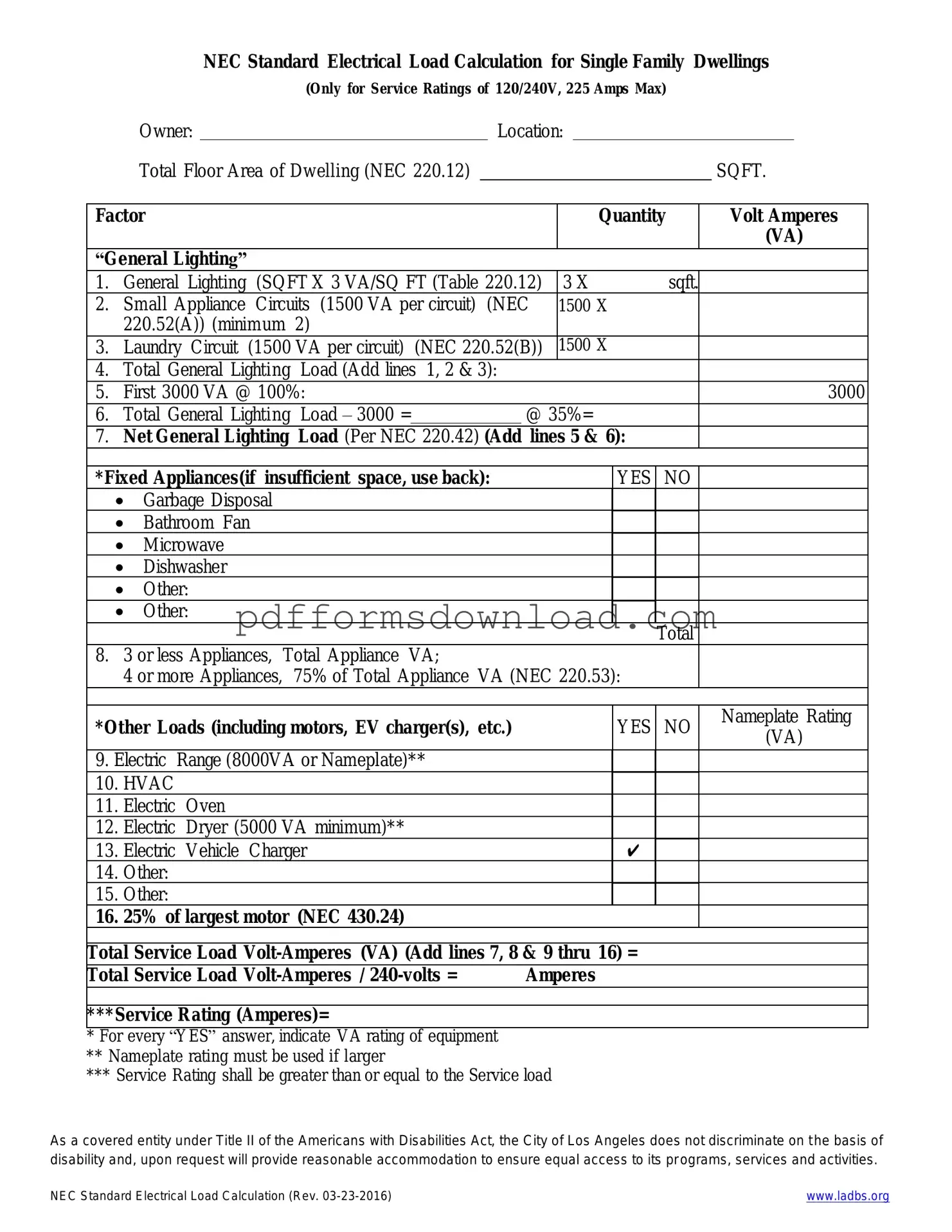What is the LADBS NEC Standard Electrical Load Calculation form?
The LADBS NEC Standard Electrical Load Calculation form is a document used to determine the electrical load requirements for buildings in compliance with the National Electrical Code (NEC). This form helps ensure that electrical systems are designed to handle the expected load safely and efficiently, which is crucial for preventing overloads and ensuring the safety of occupants.
Who needs to fill out this form?
This form is typically required for electrical contractors, engineers, and architects involved in the design and installation of electrical systems in residential, commercial, and industrial buildings. Anyone seeking a permit for electrical work must complete this form to provide the necessary load calculations to the local building department.
What information is required on the form?
The form requires detailed information about the building's electrical load, including the types of appliances, lighting fixtures, and other electrical devices that will be used. Additionally, it may ask for the square footage of the building, the number of circuits, and any special equipment that may contribute to the overall load. Accurate data is essential for effective load calculation.
How is the electrical load calculated?
Electrical load is calculated based on several factors, including the wattage of each device, the number of devices, and the demand factors specified in the NEC. The form guides users through the process, allowing them to add up the total wattage and apply demand factors to account for the likelihood that not all devices will be in use simultaneously. This calculation helps ensure that the electrical system is not oversized or undersized.
What happens if the form is not filled out correctly?
If the form is completed incorrectly, it may lead to delays in the permit approval process. In some cases, the local building department may require resubmission of the form with corrected information. This can result in additional costs and project delays, so it is essential to double-check all entries and calculations before submission.
Is there a fee associated with submitting this form?
Yes, there is typically a fee associated with the submission of the LADBS NEC Standard Electrical Load Calculation form. The amount may vary depending on the jurisdiction and the scope of the electrical work being performed. It is advisable to check with the local building department for specific fee structures and payment methods.
How can I obtain the form?
The LADBS NEC Standard Electrical Load Calculation form can usually be obtained from the local Department of Building and Safety website or office. Many jurisdictions offer downloadable versions of the form, which can be filled out electronically or printed for manual completion. Always ensure you are using the most current version of the form to avoid issues.
Are there any resources available for assistance with the form?
Yes, many local building departments provide resources to assist with filling out the form. This may include instructional guides, workshops, or one-on-one consultations. Additionally, professional organizations and electrical engineers can offer valuable insights and assistance in understanding the requirements and calculations involved.
What should I do after completing the form?
After completing the LADBS NEC Standard Electrical Load Calculation form, submit it along with any required documentation to the local building department as part of your permit application. Be sure to keep a copy for your records. Once submitted, monitor the status of your application and be prepared to respond to any requests for additional information or clarification.
